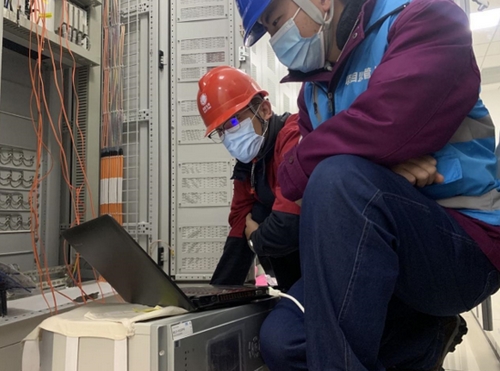On October 16, the ±1100 kV Changji converter station used the UHV DC protection tester to complete the DC protection system field verification test for the first time, further improving the safety of the UHV DC protection system.

With the development of UHV DC transmission projects in China, there are currently more than 20 DC transmission projects in operation, but the industry still lacks effective testing methods for DC relay protection functions and performance after UHV projects are put into operation. Only the equipment manufacturer's technical personnel can use the DC control and protection device debugging software, force the setting or modify the software logic to simulate the UHV DC protection action. This test method lacks independent fault judgment steps of the protection system, lacks sampling and logic discrimination tests, has defects such as incomplete test content and many test restrictions, and does not meet the existing UHV DC test procedures and specifications.
In order to solve the difficulties in the UHV project site, the State Grid Xinjiang Electric Power Co., Ltd. Electric Power Research Institute and Nanjing Nanrui Relay Protection Co., Ltd. developed an UHV DC protection tester. "The UHV DC protection tester "moves out of the body" the artificial digital signal originally inside the device, uses the tester to send a more realistic fault signal, adds independent judgment and fault detection links for the UHV DC protection system, and then tests the system to operate correctly. Sexuality.” said Nan Dongliang, head of technology at the Xinjiang Electric Power Research Institute of State Grid.
On October 16, the technicians of the Xinjiang Electric Power Research Institute of State Grid carried out the test work on the protection of the pole one A set of the ±1100 kV Changji converter station, and completed the pole bus, bipolar neutral bus, DC filter and DC overvoltage on site. The protection function verification greatly improves the accuracy, comprehensiveness and safety of the DC protection system test, and at the same time reduces the application condition limit, which is convenient for the UHV project site operation and maintenance personnel to carry out the test at any time.
In the next step, the State Grid Xinjiang Electric Power Research Institute will continue to deepen the research on UHV DC protection testing technology, further improve the function of the tester, and provide technical guarantee for the safe and stable operation of Xinjiang Power Grid UHV converter stations.
















 RCCN WeChat QrCode
RCCN WeChat QrCode Mobile WebSite
Mobile WebSite